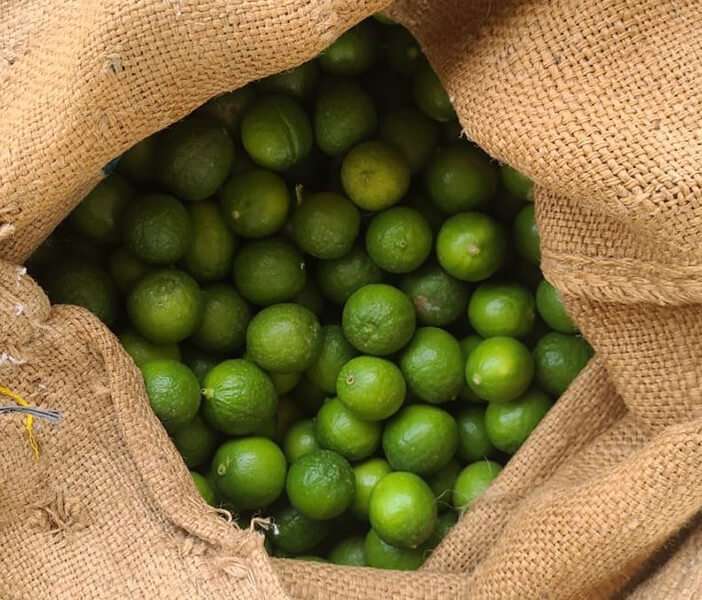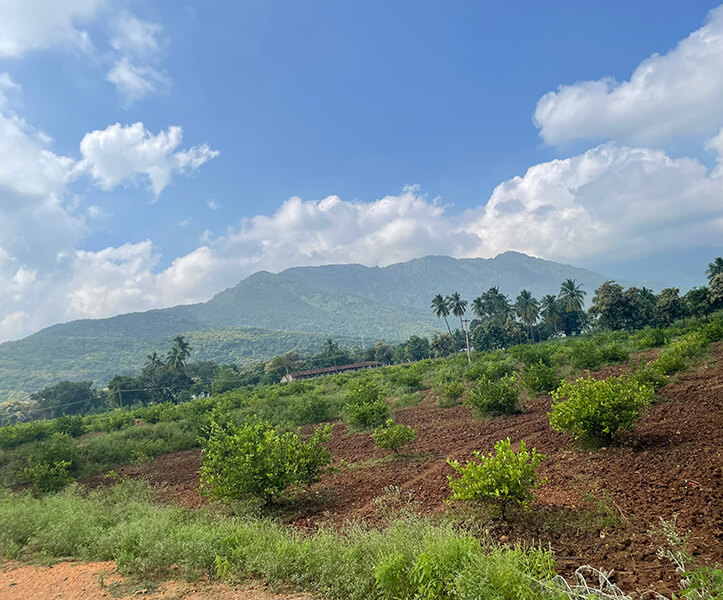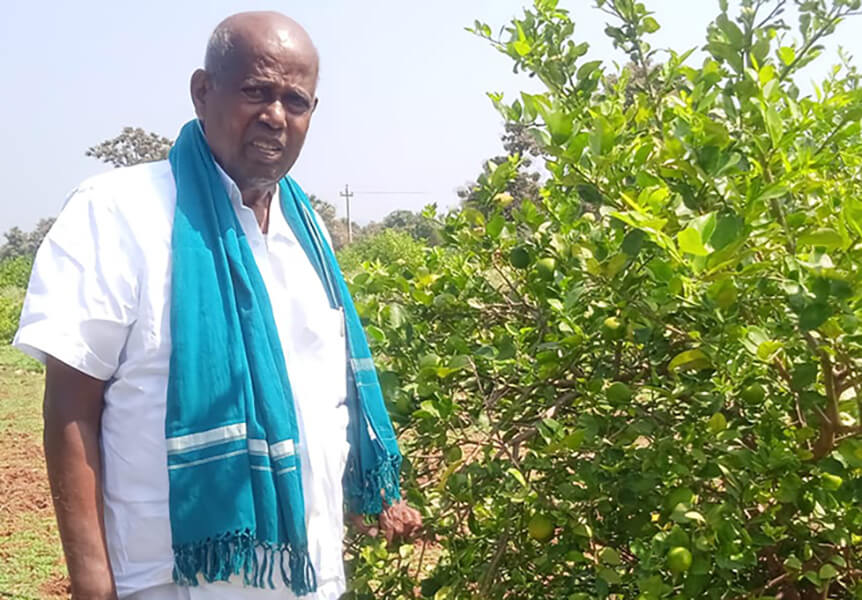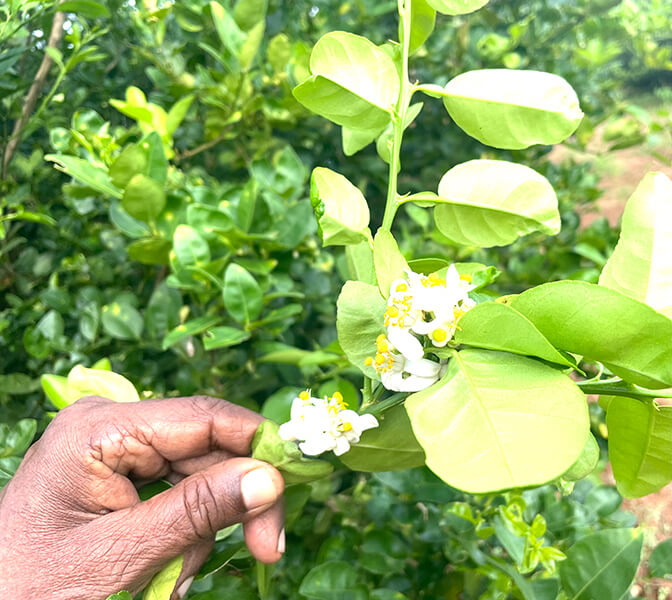Puliyangudi, a town in southern Tamil Nadu, produces the sourest of limes highly valued by food processors.
 Vijayalakshmi Sridhar
Vijayalakshmi Sridhar 
Puliyangudi, a town in southern Tamil Nadu, produces the sourest of limes highly valued by food processors.
 Vijayalakshmi Sridhar
Vijayalakshmi Sridhar
Puliyangudi in Tamil literally means ‘tart territory’. Fittingly, the big boss in this Tamil Nadu town 140 km to the southwest of Madurai, on the foothills of Western Ghats bordering Kerala, is a sour fruit called acid lime that bears the scientific name Citrus aurantifolia.
While Puliyangudi acid lime’s application for the geographical indicator (GI) status is pending, it clearly commands a premium in the market.

With a paper thin two millimetre peel, the Puliyangudi acid lime has 50-55% juice content and is packed with flavour. A tiny nail-scratch on its surface is enough to make the juices and fragrance burst through. More importantly, it has a citric acid content of 8% compared to 5% in other lime varieties. Prices therefore can go up to Rs 500 a kg when demand peaks.
This small region’s tropical climate and red soil allows around 2500 farmers to produce nearly 10,000 tonnes of acid lime on 7500 hectares. Puliyangudi itself has become a large single commodity trading hub whose inhabitants take incredible pride in it being billed the ‘lemon town’. The proximity to a large consumption market in Kerala next door and the year-round demand for lemons in a hot country helps.
Even accounting for such factors, Puliyangudi’s acid lime-fame is arguably built on the base of a pioneering farmer and innovator called V Antonysamy. Now 83, Antonysamy is credited with developing several high-yielding varieties of acid lime that the region’s farmers have benefitted from.

His work not just on limes, but increasing sugarcane and rice yields through sustainable methods, has won him national acclaim too. With a 300-acre landholding, Antonysamy would rank among the wealthiest farmers in a country where farmers own less than two acres on average.
Antonysamy is a burly man with a round, chubby face, bald head and loads of, what locals consider, “attitude”.
Besides the white pick-up truck he drives, and the air of authority that occasionally creeps into his voice, there are few visible signs of prosperity that would make him an outlier in his surroundings.
After a breakfast of kambu koozh (a gruel made with bajra and buttermilk), Anthonysamy spends most of the day examining every tree and soil bed. His small eyes seem to be getting smaller with age, but the ability to spot something odd, here or there, remains intact.
“The farm wasn’t offered to me on a platter,” he says, clad in a white shirt, veshti and a typical farmers union green towel around his neck, trying to follow deer footmarks on soil made butter-soft by recent rains, to ascertain the damage done by nocturnal visitors.
Antonysamy joined his father’s farm in 1962 learning about Nature’s ways, the native science of soil management and weeds that helped and hampered the crop.

In the late 1980s, he developed a new lime breed from locally available varieties, by grafting and trial and error, that could almost triple the output.
That led to Puliyangudi’s acid lime boom and its demand in the food processing industry in Kerala and Tamil Nadu.
On average, acid lime cultivation can fetch farmers a net profit of Rs 200,000 per acre a year, accounting for seasonal price fluctuations.
“In the last decade, acid lime productivity has increased 25-30%. Farmers now get more than 1000 fruits a tree on average compared to 700-750,” says Palani Kumar, Head (Horticulture), Citrus Research Station and Tamil Nadu Agricultural University (TNAU), Sankarankovil.
However, climate change is proving a party-pooper.
Every morning, with his lunch packed in a steel tiffin box, 62-year-old Abdul Wahab rides a 100cc TVS moped to his acid lime orchard in Konandoppu Aaru village in the Puliyangudi region. It’s a big improvement on the bicycle he used until a decade ago.
By December, his lime trees should have bunches of pearl-white flowers. But the northeast monsoon rains, delayed by almost two months, that battered southern Tamil Nadu, have knocked the flowers off. The unseasonal deluge has also resulted in citrus canker, a bacterial disease that devours citrus leaves. Wahab needs to prune several thousand afflicted branches carefully to ensure he has any marketable output during the April-May harvest season. The interest on the money he has borrowed from a local loan shark would grow as fast as the weeds around his acid lime.
“Better farm management with increased use of organic manure, mulching and pruning can overcome such issues,” says Antonysamy.
A GI tag for Puliyangudi acid lime can only make farmers’ prospects better.
Vijayalakshmi Sridhar is a business, technology, food and environment writer based in Chennai.